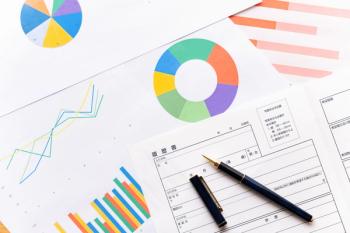
Melding Science with Woo-Woo
A mainstream psychiatrist finds herself exploring a treatment that is off the radar for most.
A KETAMINE JOURNAL
I am not a researcher; I am a clinical psychiatrist and a writer. When I write about my experiences treating patients with ketamine—as I soon will—I want to be clear: these are case studies from my own practice, they are not randomized, placebo-controlled experiments, but rather a small number of clinical anecdotes. While the use of ketamine and ketamine assisted psychotherapy (KAP) are legal, with the exception of intranasal esketamine (Spravato), ketamine has not been approved for the treatment of any psychiatric condition by the US Food and Drug Administration (FDA). My use of ketamine will be designed to optimize the chances that patients will have a positive experience and a good response, but KAP, especially when done in groups, has no precise protocols.
If my enthusiasm is contagious and creates a placebo response, or if I help a desired outcome along—for example, by prescribing Chantix to a patient with depression who also wants to use their ketamine experience to try to stop smoking—then so be it. Ketamine, unlike psilocybin, does not require that patients go off their antidepressants, so there will be no standardization in my patient population. Ketamine has been used as an anesthetic agent since the 1960s and was approved by the FDA for such use in 1970. As an inexpensive, generic medication, it is not likely to get the funding necessary to conduct large scale, controlled, double blind studies.
In his book, How to Change Your Mind, Michael Pollen discusses how lysergic acid diethylamide (LSD) was studied in labs across the United States and used to treat alcohol use disorder in Canada. Over 1000 papers were published on LSD research and there were international scientific meetings on psychedelic research. When psychedelics got wrapped into the War On Drugs, all research on their therapeutic uses stopped abruptly. With Timothy Leary’s enthusiastic calls for youth to “Turn on, tune in and drop out,” psychedelics became part of the counter-counter culture. What started out as a possible and even promising treatment turned into a recreational experience for hippies.
If you have picked up any newspaper or psychiatric journal, you know that researchers are once again studying psychedelics as treatments for psychiatric disorders. Psychedelics, including ketamine, are still used as recreational drugs, and ayahuasca is used for spiritual and healing ceremonies by indigenous communities. An association remains with meditation, mindfulness, a reverence for nature, and a belief in a mystical or spiritual world.
Science, especially the science that doctors use to treat patients, has a difficult relationship with spiritual and mystical practices. This is not to say that doctors are not spiritual or religious individuals, or that they would discourage patients from observing their religions or praying for good health (or world peace), but mystical practices used as a primary means of healing are not greeted enthusiastically by the medical community. If anything, medicine has an antagonistic relationship with practices that are not scientifically based, and the spiritual community often returns that antagonism. When people talk about using Reiki, healing crystals, energy practices, or even complimentary or alternative practices, there is a medical force that rolls its eyes. Those who use these treatments may also see mainstream doctors, but they may not volunteer this information to their physicians for fear of scorn.
The Merriam Webster online dictionary defines woo-woo as “dubiously or outlandishly mystical, supernatural, or unscientific.” Psychedelics have lived in the land of woo-woo since they were outlawed. They have slowly made their way back into scientific studies, shepherded by the late Roland Griffiths, PhD, at Johns Hopkins. Ketamine too has emerged from the dubious to a substance worthy of study and the use of intranasal esketamine has now been FDA approved for the treatment of treatment-resistant depression. There are places and conferences where these 2 worlds mingle, but not comfortably for most.
KAP, however, teeters on the line of the dubious. It is not just about the chemical, as KAP honors the journey and includes an emphasis on the mindset of the patient and the physical setting—things that differentiate KAP from using “Special K” (ketamine’s street drug name) as a recreational drug or getting IV infusions of ketamine for treatment of major depression without cooccurring psychotherapy.
The music is an essential part of the treatment experience and it stretches from nature sounds, to the primal, to classical music. Practitioners talk about sitting with the patient/client during the dissociative experience as “holding space”—a term that is perhaps not far from the psychoanalytic concept of a holding environment—but holding space is not a term one uses in 2024 mainstream psychiatry.
In my own practice, I have decided to do KAP in groups of 2 to 4 patients, with a cofacilitator. Groups make sense to me as people talk about ketamine experiences as being transpersonal, connected events, and group therapy has its own power. In sessions where therapists and physicians are trained to do KAP, such as the PRATI program I described in my last entry, participants end up feeling a bond to those they trained with, and given how isolating psychiatric disorders can be, I love the idea of people connecting over shared difficulties and parallel psychedelic journeys.
As a doctor, especially one who has always identified as being conventional, I have suddenly found myself in a funny space. My colleagues argue I should be giving Spravato, that it is perhaps ‘wrong’ to offer a treatment that is not evidence-based as authorized by the FDA. Is it sketchy—unethical even?—or is it an act of desperation and innovation for those who have been let down by conventional treatments? What about for patients who do not want to risk the adverse effects of our medicines, or who like the idea of a treatment that is not on-going? Or those who suffer for reasons that do not clearly get captured by our diagnostic entities?
My patients do not stop their medications or psychotherapy, this is an augmenting event that is meant to be a healing experience (not a cure) and has the potential to shift their perspective. And like any medical, alternative, or complementary treatment, it can do nothing and there is the potential for harm.
My consent forms do not use the term “journey,” but rather “dissociative experience.” I light a candle and draw the shades to create a soothing atmosphere. Patients hold the ketamine lozenges in their mouth and my cofacilitator and I read poetry aloud while we wait. I am careful to avoid anything that might be considered religious or romantic. Still, nothing about group ketamine experiences looks like conventional psychiatry as patients stretch out on my office couch and camping mattresses, cover their eyes with blackout shades, and put on headphones with curated music—playlists I have picked from the large collection of KAP playlists on Spotify.
Perhaps there is a way for spiritual, mystical, and alternative treatments to come to the table with evidence-based medicine. Of course, we are starting to see this with psychedelics, and perhaps MDMA and psilocybin will also be legalized for therapeutic use. The fear, of course, is that we have been led astray before and the medical field does not want to condone snake oil. FDA-approval is a seal of medical safety and efficacy, but medications have been pulled when they are later found to be unsafe. The manufacturing for generic medications is not always effectively monitored, and our evidence-based medicine is far from perfect.
It is a difficult tightrope and I am a bit surprised to find myself here decades into my career—energized and excited by a treatment that feels more like a fun afternoon at camp than a medical procedure. I am just getting started, but so far, the patients enjoy the experience and most are feeling better. Still, I am not shy about telling people: this is a little bit of medicine and a little bit of woo-woo!
Dr Miller is a clinical psychiatrist and writer in Baltimore. She is on the faculty at the Johns Hopkins School of Medicine.
Note: In these commentaries, Miller will discuss her experiences and thoughts as she explores issues associated with ketamine-assisted psychotherapy.
The views and practices expressed in these commentaries are solely those of the author and do not necessarily represent the position of Psychiatric Times or its editors.
Newsletter
Receive trusted psychiatric news, expert analysis, and clinical insights — subscribe today to support your practice and your patients.















